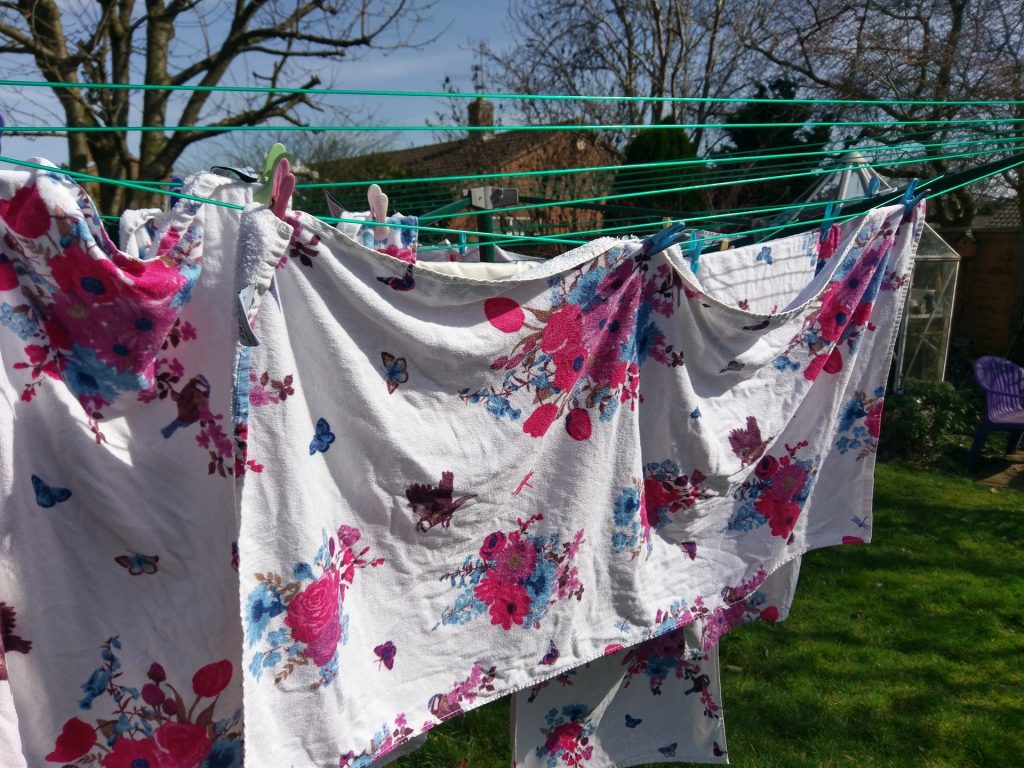

If seems like the utility bills are out of control, you're not wrong. Experts are predicting that energy costs will rise 16% over the next year. That's why it's so important to get a grip on your electric bill now, so you can better weather the year to come.
The laundry room
What if you could lower your electric bill by ten or fifteen percent? That could mean a $150 or more in annual savings, a good step towards making ends meet in this crazy economy. Your washer and dryer consume about 8% of your electric bill, making the laundry room the perfect place to start whittling down the electric bill. So here are some tips to keep the cost of clean clothes at a minimum:
Fill 'er up! The washer and dryer cost the same to run whether you're washing a full load or just a couple items. So fill the washer up and make the most of the energy running each load.
Use cold water. About 90% of the cost of running the washing machine comes from heating the water. Unless you're washing baby diapers or germ-laden clothes, there really is no need to use hot water. Experts at the Alliance to Save Energy say that washing clothes in cold water can save you as much as $63 a year on electricity bills. And since most detergents today are formulated specifically for use with cold water, it just makes sense to make the switch to cold water.
Give it an extra spin. Giving your clothes an extra spin dry cycle can cut the drying time in half.
Start clean. Keep your dryer running efficiently by cleaning the lint trap after every use. Check the dryer hose and vent regularly for lint accumulation. You can get some serious clogging in your vent if you don't clean it out regularly. That means your dryer has to work longer and harder to get the same results as you do from a clean hose and vent. Lint accumulation in the hose and vent is the primary cause of dryer fires.
Invest $8 or $9 in a dryer hose brush and routinely clean the hose going to the vent. This is especially important just before winter sets in and again when the weather warms up in the spring. That's because when the hot, moist air of your dryer leaves the house, it condenses at the mouth of the vent when it meets the cold air outside. In the winter time it is very difficult to clean a clogged vent when everything is frozen, so be sure to do this before winter brings hard freezes.
Bonus savings: Your dryer will last longer if it isn't overworking to produce heat. And a clean hose means you may even prevent a dryer fire.
Dry similar clothes together. How often do you open up the dryer to find some of the clothes are bone dry while some are still damp? Heavy clothes, like jeans and towels take a lot of energy to dry. Don't make it worse by adding in lightweight clothes that will get over-dry. Separate out the heavy clothes and keep lightweight clothing for another load.
Dry smaller loads. On a similar vein, don't overload the dryer. Clothes need space inside the dryer to tumble and get the hot air circulating all around. A dryer stuffed with clothes may need to run for a second cycle, needlessly consuming more energy.
Don't over-dry. It's OK if your clothes don't emerge from the dryer 100% dry. In fact, for some clothing, like dress shirts or synthetic fabrics, it's actually better to take them out and hang them up when they are just a tad shy of bone-dry. It helps to ensure the fabric is not wrinkled. And fabric that is over-dried will wear out and fade quicker.
Dry multiple loads in quick succession. Drying clothes is like baking cookies in the oven. Every time you open the door, the dryer cools down and it needs more energy to heat back up. Have your next batch of clothes to dry ready to go in as soon as you remove a dry load.
Better yet, don't use the dryer. When it's not freezing or raining outside, you should consider drying your clothes outdoors on a clothesline. Each dryer load costs about 50¢. If you do just four loads of laundry a week, drying clothes on a clothesline could save you $50-$60 a year.

And here's a bonus: your clothes will last longer and look newer. The heat of the dryer is one reason that clothes fade over time. All that lint that you're removing from the lint trap? That's little particles of clothing, which means the dryer is wearing your clothes out faster than if you dried them on the clothesline. It's in the dryer that we lose buttons and zippers and hooks catch on all the tumbling clothes, causing premature wear and tear.
If you follow these tips, you could save $100 a year, or more, on the cost of doing laundry. Your machines will last longer as well as your clothes. It's an all-around win for the budget-conscious.